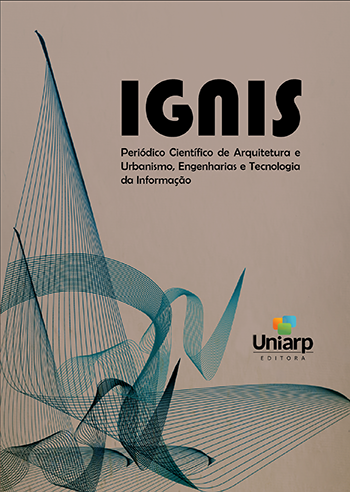GEOSPATIALIZATION OF GEOREFERENCED DATA AND SURFACE GEOLOGY: A CASE STUDY MUNICIPALITY OF CAÇADOR / SC
GEOSPATIALIZATION OF GEOREFERENCED DATA AND SURFACE GEOLOGY: A CASE STUDY MUNICIPALITY OF CAÇADOR / SC
Abstract
This article presents studies that started from the integration of the disciplines of the 4th phase of the Civil Engineering Course at the Alto Vale do Rio do Peixe University (UNIARP), campus Caçador / SC, such as Topography I, Geology and Computer Assisted Design. A project that proposed to substantiate the themes related to the elaboration of a map where the information of municipal places and geodesic stations belonging to the Brazilian network, georeferenced, aggregated to the predominant superficial geological characteristic, were represented. This work was developed through an applied methodology, based on bibliographic research, of qualitative character, with case study. Therefore, the municipality of Caçador, located in the midwest region of the state of Santa Catarina, was sought as a study area. The coordinates of the geodesic points that are in good condition in the municipality, streets and sub-district were used, obtained through the IBGE database for the development of the map. The QGIS and ProGRID software allowed the files to be converted, so that they were compatible with the AutoCAD software. Therefore, the transformation of the geodetic points to UTM coordinates was carried out, and the conversion of the street and sub-district meshes to the DXF format, integrating them from the geospatialization, the points with the street mesh in the context of the delimitation of the subdistrict. In conclusion, a map was obtained at an appropriate scale, including the predominant geological characteristic, based on the potential of the information involved, in order to contribute both to the visualization of the data and to further studies and projects by academics and professionals from engineering areas and related areas.
Downloads
Published
Issue
Section
License
Copyright (c) 2021 Liane da Silva Bueno; Nayana , Gabriel, Rodrigo, Pedro Paulo

This work is licensed under a Creative Commons Attribution-NonCommercial-NoDerivatives 4.0 International License.
Autores que publicam nesta revista concordam com os seguintes termos:- Autores mantém os direitos autorais e concedem à revista o direito de primeira publicação, com o trabalho simultaneamente licenciado sob a Licença Creative Commons Attribution que permite o compartilhamento do trabalho com reconhecimento da autoria e publicação inicial nesta revista.
- Autores têm autorização para assumir contratos adicionais separadamente, para distribuição não-exclusiva da versão do trabalho publicada nesta revista (ex.: publicar em repositório institucional ou como capítulo de livro), com reconhecimento de autoria e publicação inicial nesta revista.
- Autores têm permissão e são estimulados a publicar e distribuir seu trabalho online (ex.: em repositórios institucionais ou na sua página pessoal) a qualquer ponto antes ou durante o processo editorial, já que isso pode gerar alterações produtivas, bem como aumentar o impacto e a citação do trabalho publicado (Veja O Efeito do Acesso Livre).






